Brass Hinges
Brass hinges were used to connect the lid to the main part of the box. There were countless styles of brass hinge, and the type chosen by the box maker would reflect practicality and design.
With the exception of writing boxes, most boxes were fitted with stop hinges, allowing the lid to rest at right angles to the box. On some of the larger, heavier boxes, or boxes that had spring-loaded mirrors concealed in the lid, more robust and reinforced hinges would be used. E. Wells & Co. Patent hinges were sometimes used for this application as they were heavy duty in build and fastened securely to the core walls of the box and lid, rather than through the interior rims as usual. The screw fastenings themselves were hidden from view, so all that remained in sight was a simplified, but very smart block hinge bearing the hinge maker’s stamp. These hinges could be found on some late Georgian, William IV or early Victorian era boxes. The company of Edwards also patented their own almost totally concealed hinge with a similar design principle to the E. Wells & Co. Patent hinge. This hinge, with attached threaded bolts, was fitted into the main core structure of the box and lid walls. Using small routed areas within the interior of the box, access could be gained in order to fasten securing nuts to the threaded bolts. All that was left visible was the thin rotating barrel of the hinge.
Box hinges were sometimes fully decorated with engraving work to really ‘accent’ the interior of the box. Even Edwards, being more ‘formal’ box makers, were known to add decorative incisions to their screw heads before using them to secure some of their hinges.
Inspired by the earlier French Necessaire boxes, some of the larger Victorian boxes used arched brass hinge connectors to act as ‘stays’, reducing strain on the hinges when the lid was open. Certain boxes that contained mirrors in the lid had these arched brass connectors modified with ridged increments so that the viewing angle of the mirror could be adjusted when still fitted within the box lid.
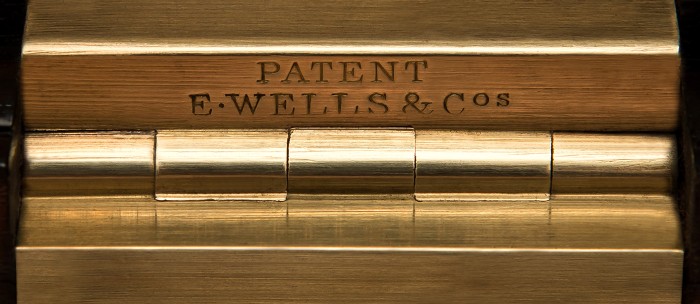
E. Wells & Co Patent brass hinge.
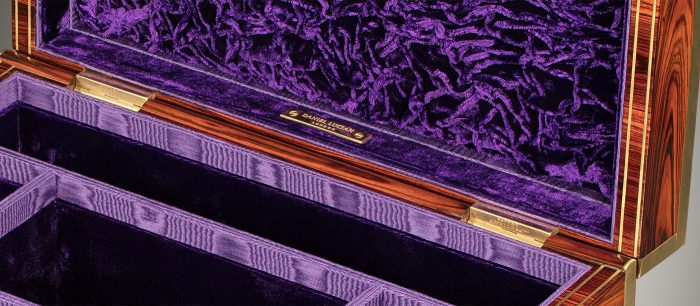
E. Wells & Co Patent brass hinges from an antique jewellery box in kingwood by William Chrisp.

‘Edwards Patent’ concealed brass hinge.
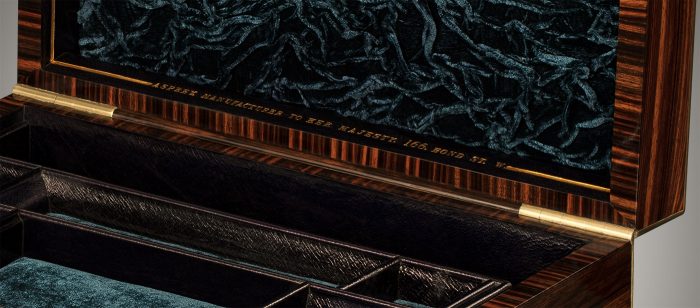
Edwards Patent concealed brass hinges from an antique jewellery box in calamander with secret wall compartment by Asprey.
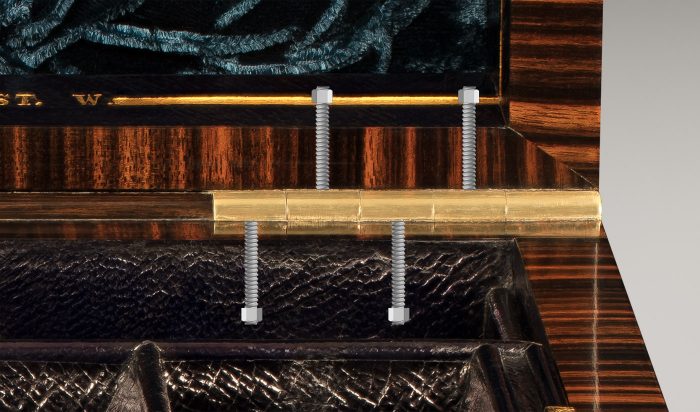
Edwards Patent concealed brass hinges with (simulated) screw threads and nuts.
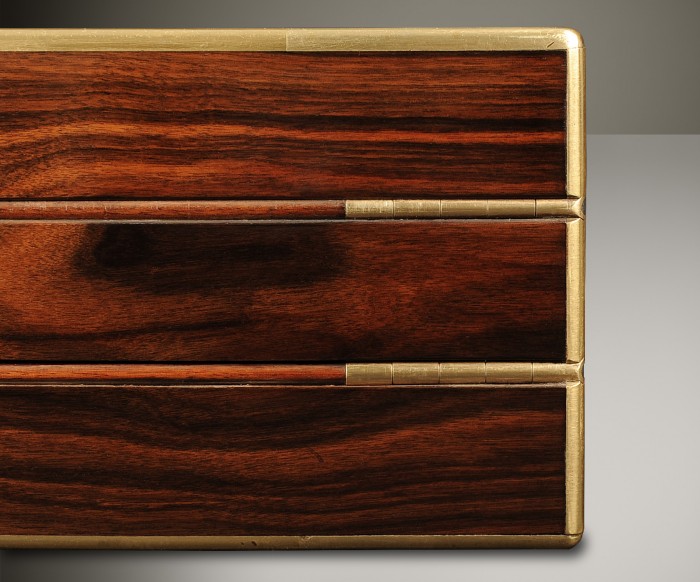
Edwards Patent concealed brass hinges.
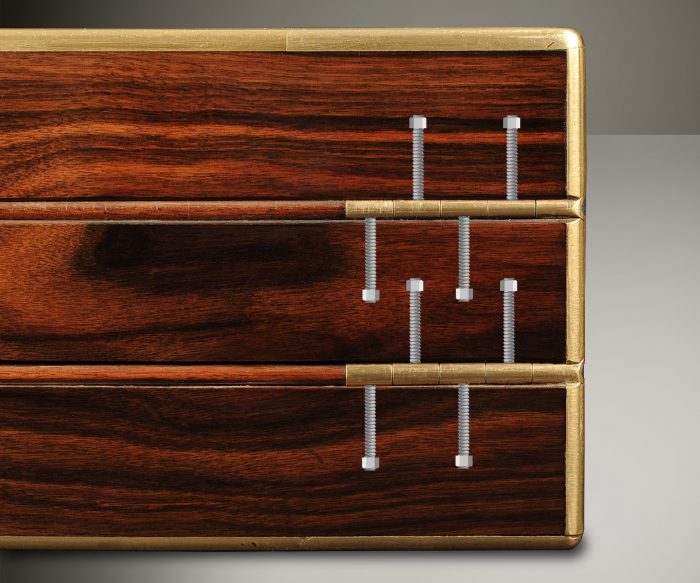
Edwards Patent concealed brass hinges with (simulated) screw threads and nuts.
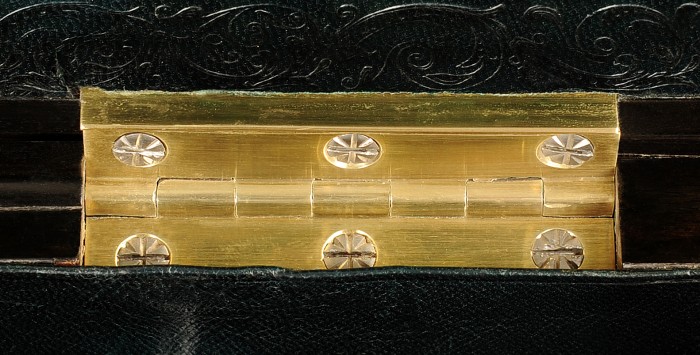
Antique brass hinges with decorative incisions to the screw heads by Howell, James & Co.

Concealed brass hinges with decorative engraving by Leuchars.
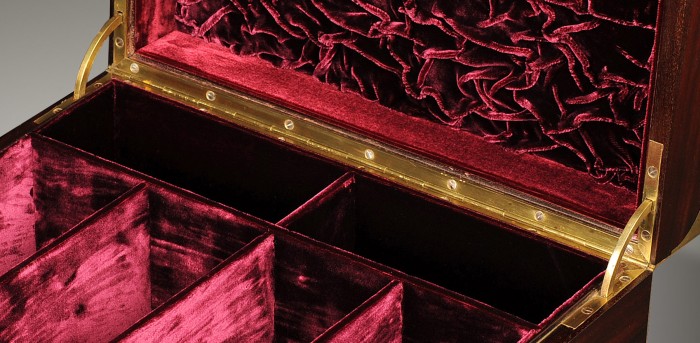
Brass quadrant hinge from a French antique jewellery box.
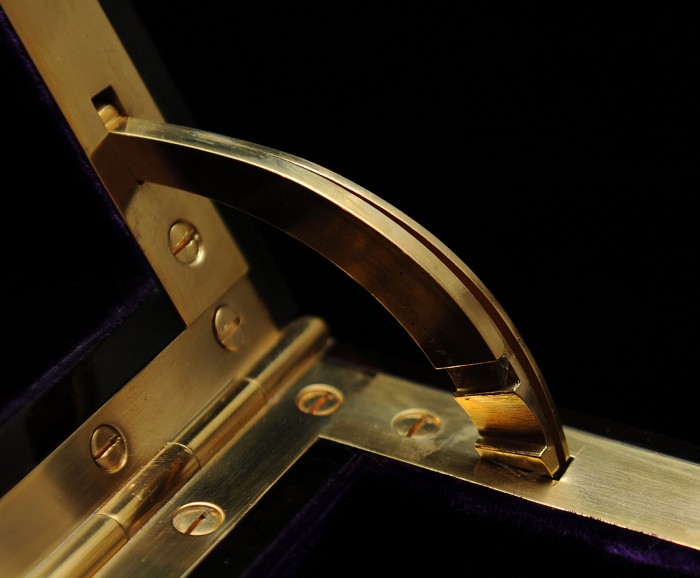
Antique brass quadrant hinge with incremental ridges for mirror angle adjustment.
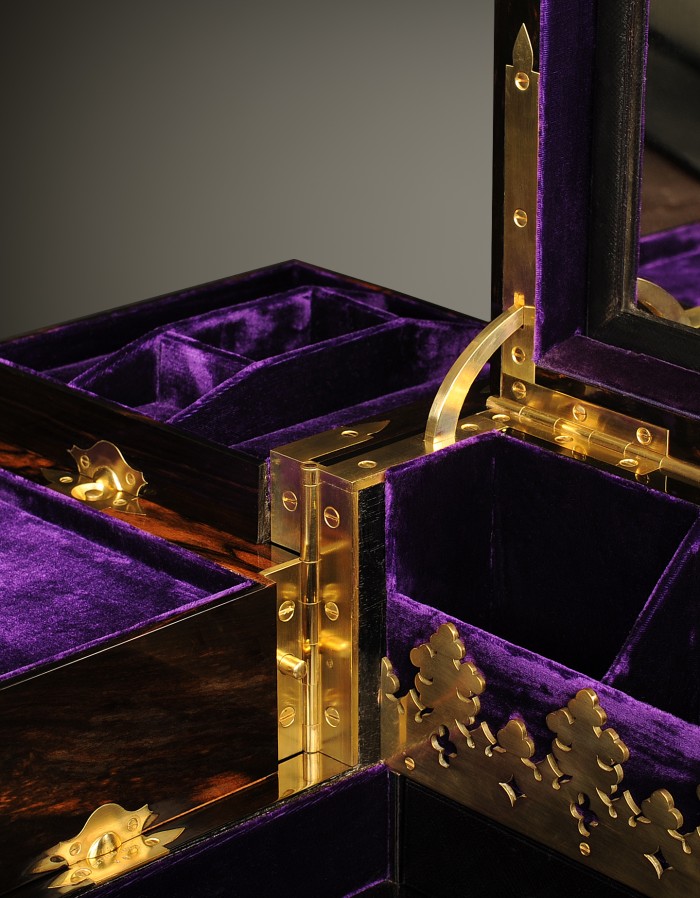
Cantilever split-hinge from an Asprey jewellery box with Betjemann Patent mechanism.
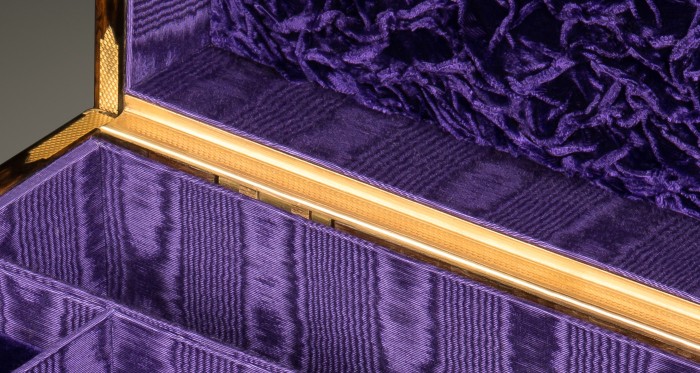
Concealed brass hinges with decorative guilloché/ engine turned design by Asprey.
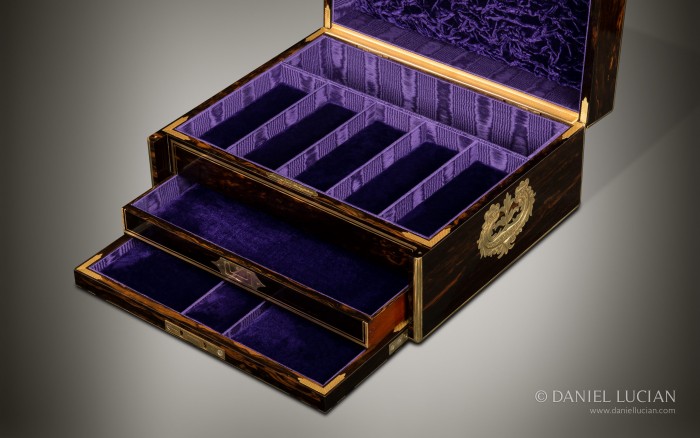
Asprey ‘Exhibition’ Piece – Antique Jewellery Box in Coromandel with Brass Inlay and Secret Compartments.

Antique brass hinge with ‘bright-cut’ engraved decoration.
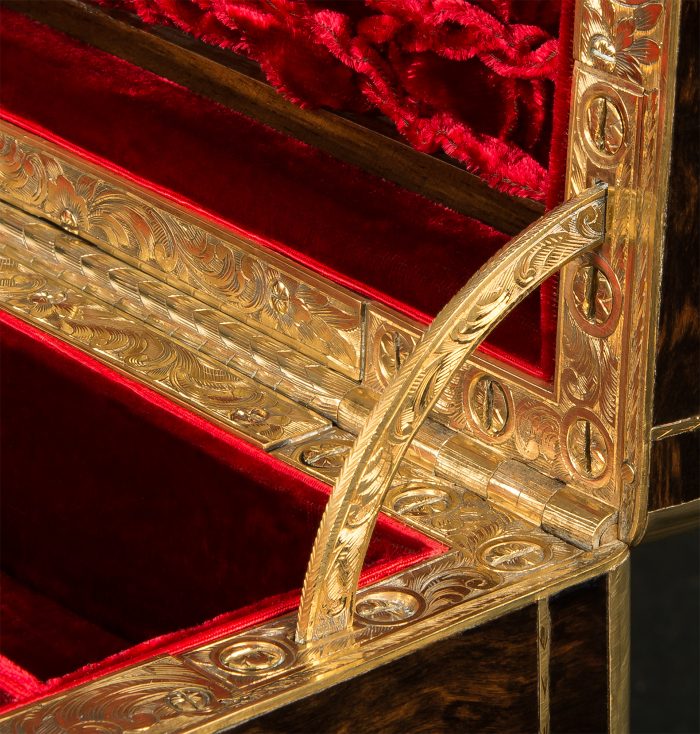
Brass quadrant hinge engraved with a floral and scrollwork design, from an antique jewellery box in coromandel with engraved brass inlay.
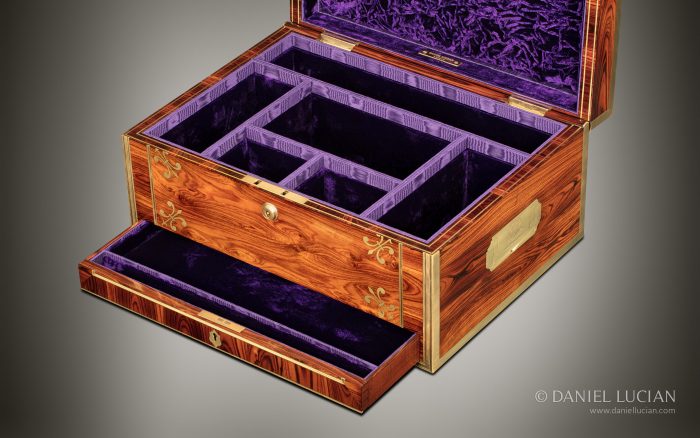
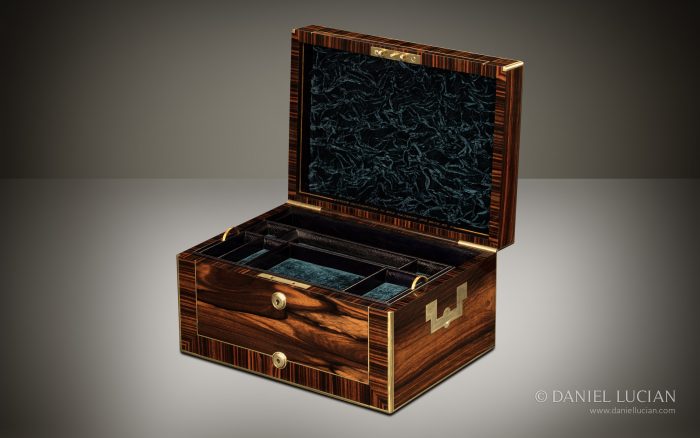
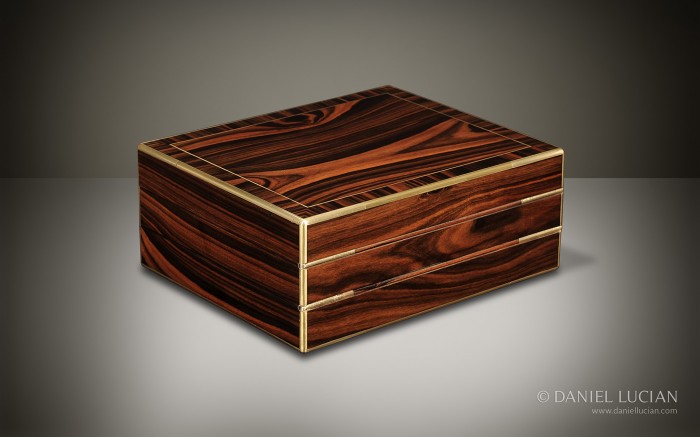
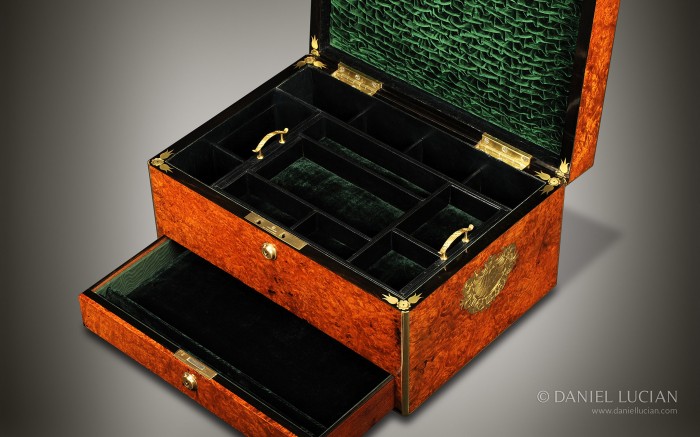
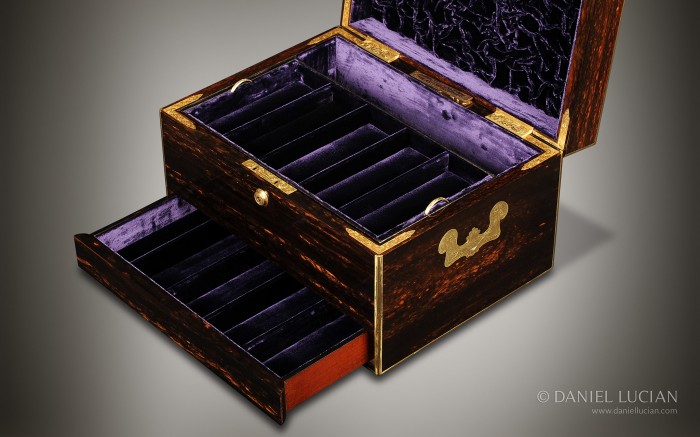
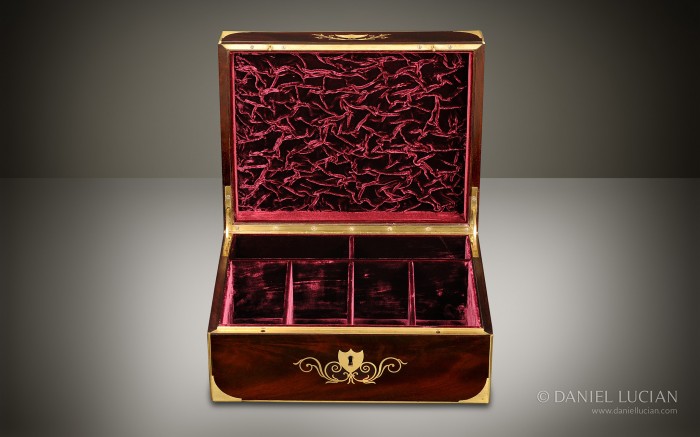
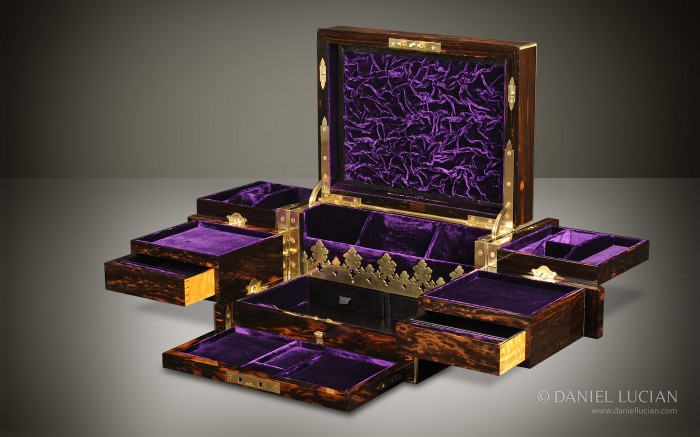
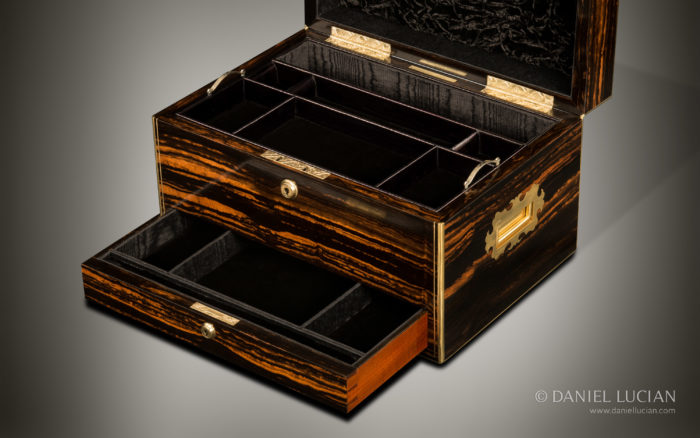
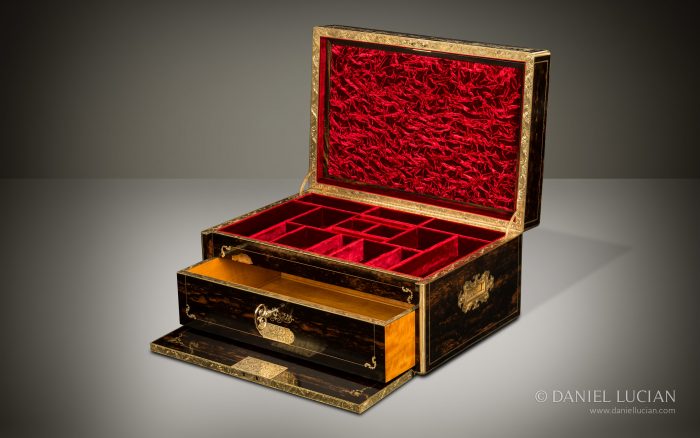
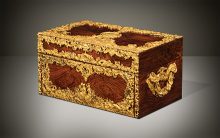 Price On Application
Price On Application